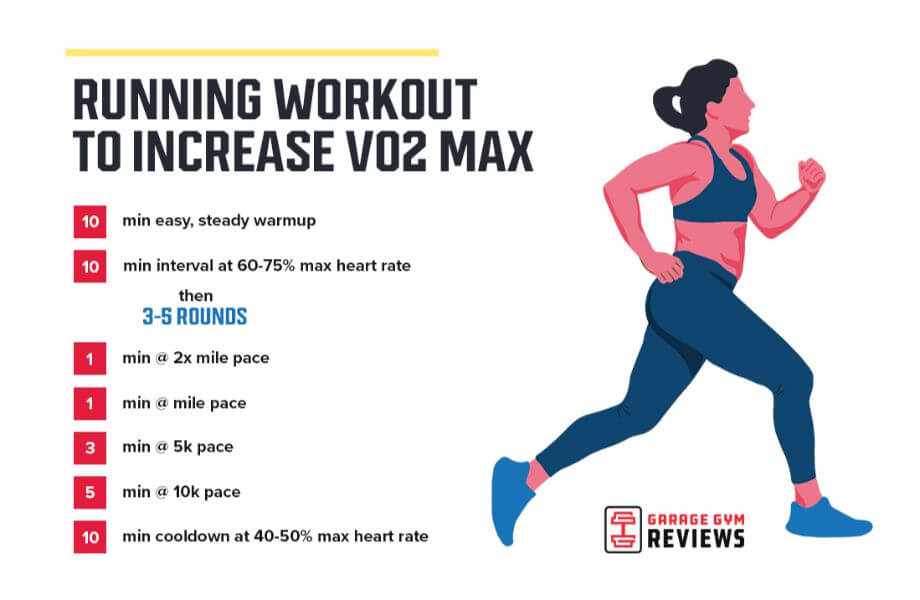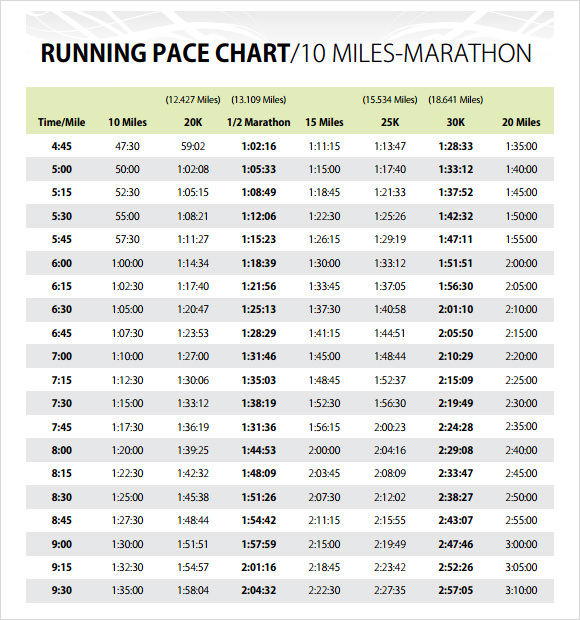Demystifying the 10-Minute Mile Pace: Understanding the Basics
The 10-minute mile pace is a popular benchmark among runners, representing a respectable speed achieved by many recreational and competitive athletes. In the running community, this pace often serves as a target for those looking to improve their overall fitness, endurance, and race performance. Achieving a consistent 10-minute mile pace can bring numerous benefits, including increased cardiovascular health, enhanced muscular strength, and improved mental resilience.
Setting realistic goals is crucial for runners at any level. The 10-minute mile pace may be a natural progression for some or a challenging yet attainable objective for others. Regardless of one’s starting point, the pursuit of this pace can be a rewarding journey, fostering discipline, determination, and a sense of accomplishment. By understanding the basics of the 10-minute mile pace and implementing effective strategies for improvement, runners can enhance their performance and reap the rewards of their dedication and hard work.
Assessing Your Current Running Pace: A Crucial First Step
Before diving into the process of improving your running pace, it is essential to establish a baseline by evaluating your current running pace. This initial assessment will provide valuable insights into your strengths, weaknesses, and the specific areas that require improvement to achieve a 10-minute mile pace. By measuring and tracking your running pace effectively, you can set realistic goals, monitor progress, and adjust your training plan accordingly.
To begin, determine your average mile time by timing yourself during a one-mile run. Warm up for approximately 10 minutes, then run the mile at a challenging yet sustainable pace. Record your time and calculate your current mile pace by dividing the total time (in minutes) by the number of miles (in this case, 1). This simple calculation will give you a clear understanding of your current running pace and help you set specific, measurable, and attainable goals for improvement.
In addition to tracking your mile pace, consider incorporating other metrics into your assessment, such as cadence (steps per minute) and heart rate. Monitoring these factors can provide a more comprehensive understanding of your running form and efficiency, allowing you to make data-driven decisions about your training plan and pace improvement strategies.
Building a Strong Running Foundation: Essential Elements for Success
A solid running foundation is crucial for any runner seeking to improve their pace, reduce injury risk, and enhance overall performance. By focusing on proper form, breathing techniques, and regular stretching, runners can lay the groundwork for a successful pursuit of a 10-minute mile pace. Here, we delve into each of these essential elements and offer advice on how to develop them effectively.
Proper Running Form
Maintaining proper running form is vital for maximizing efficiency and reducing the risk of injury. Key elements of good running form include a tall, upright posture, a slight forward lean, and quick, short strides. Focus on engaging your core muscles, keeping your shoulders relaxed, and landing midfoot or forefoot, avoiding heel striking whenever possible. By practicing and reinforcing these form principles, you can improve your running economy and lay the groundwork for a faster running pace.
Breathing Techniques
Effective breathing is another critical component of a strong running foundation. Many runners find success with belly breathing, which involves expanding the diaphragm and filling the lungs completely with air. This technique helps maximize oxygen intake, ensuring that your muscles receive the necessary fuel to maintain a strong running pace. Practice deep, rhythmic breathing during your runs, focusing on inhaling for a count of three and exhaling for a count of three or four. Over time, this practice can help improve lung capacity, enhance endurance, and support your pursuit of a 10-minute mile pace.
Regular Stretching
Incorporating regular stretching into your running routine can help improve flexibility, reduce muscle tension, and prevent injuries. Focus on stretching the major muscle groups used in running, including the calves, hamstrings, quadriceps, hip flexors, and glutes. Dynamic stretches, such as leg swings, lunges with a twist, and high knees, are particularly beneficial before runs, as they prepare the muscles for activity and promote proper range of motion. After your runs, static stretches, held for 20-30 seconds, can help reduce muscle soreness and improve overall mobility.
Incorporating Speed Workouts: Strategies for Improving Running Pace
Speed workouts are essential for any runner looking to improve their pace and reach a 10-minute mile pace. These high-intensity workouts challenge your cardiovascular system, muscular endurance, and running economy, ultimately leading to faster running times. By incorporating various speed workout strategies into your training plan, you can systematically build your speed and endurance while keeping your training engaging and dynamic.
Interval Training
Interval training involves alternating between high-intensity and low-intensity periods of exercise. For example, a common interval workout for runners might include alternating between one minute at a hard effort (approximately 5K pace) and one minute at a slower, recovery pace. Repeat this cycle for a total of 20-30 minutes, adjusting the duration and intensity of the intervals based on your current fitness level and goals. Interval training can help improve your running form, increase your lactate threshold, and enhance your overall speed and endurance.
Tempo Runs
Tempo runs, also known as lactate threshold runs, involve maintaining a challenging yet sustainable pace for an extended period. Aim for a pace that feels comfortably hard, approximately 10-15 seconds slower per mile than your 10K race pace. A typical tempo run might last between 20 and 40 minutes, depending on your fitness level and training goals. By incorporating regular tempo runs into your training plan, you can improve your running efficiency, increase your lactate threshold, and build the mental toughness necessary to maintain a strong pace during races and long runs.
Hill Repeats
Hill repeats are a powerful speed workout strategy for building lower body strength, power, and running economy. Find a moderately steep hill (approximately 4-6% grade) and run up the hill at a hard effort, focusing on maintaining good running form and a quick cadence. After reaching the top, jog back down the hill as a recovery period before starting the next repeat. Aim for 4-8 hill repeats during your workout, adjusting the distance and incline based on your fitness level and goals. Hill repeats can help improve your running form, increase your leg strength, and enhance your overall speed and endurance, making them an invaluable addition to any runner’s training plan.
Strength Training for Runners: Boosting Performance and Preventing Injuries
Strength training is a crucial component of any runner’s training plan, as it can significantly improve running performance, increase efficiency, and reduce the risk of injury. Focusing on exercises that target the core, legs, and glutes can help build the necessary strength to maintain a strong running form and enhance your ability to sustain a faster pace, such as a 10-minute mile pace. By incorporating regular strength training sessions into your routine, you can improve your overall running economy and become a stronger, more resilient runner.
Core Strength
A strong core is essential for maintaining good running posture, promoting balance, and reducing the risk of injury. Exercises such as planks, side planks, Russian twists, and bicycle crunches can help strengthen your core muscles, including your abdominals, obliques, and lower back. Aim for 2-3 core strength sessions per week, incorporating a variety of exercises to challenge your muscles from different angles and promote overall core stability.
Leg Strength
Building leg strength is vital for improving your running power, speed, and endurance. Exercises such as squats, lunges, deadlifts, and calf raises can help target the major muscle groups used in running, including the quadriceps, hamstrings, glutes, and calves. Incorporate 2-3 leg strength sessions per week, focusing on both high-rep, low-weight exercises to improve muscular endurance and low-rep, high-weight exercises to build raw strength. This balanced approach will help ensure that your legs are well-prepared to handle the demands of running at a faster pace.
Glute Strength
Glute strength is often overlooked in runners, but strong glutes are essential for maintaining proper running form, generating power, and preventing injuries. Exercises such as glute bridges, hip thrusts, donkey kicks, and clams can help target and strengthen the glute muscles, improving your running efficiency and power. Aim to include 1-2 glute-focused strength sessions per week, incorporating a mix of exercises that challenge your muscles in different ways.
Nutrition and Recovery: Fueling Your Body for Success
Proper nutrition and recovery play a critical role in achieving a 10-minute mile pace. By providing your body with the necessary fuel and allowing it adequate time to rest and repair, you can optimize your performance, reduce the risk of injury, and accelerate your progress toward your running goals. In this section, we will discuss pre- and post-run meals, hydration, and rest, offering practical tips and advice to help you make the most of your training.
Pre-Run Meals
Eating a balanced pre-run meal can help ensure that you have the energy needed to sustain a strong running pace throughout your workout. Aim to consume a meal that is high in carbohydrates, moderate in protein, and low in fat and fiber, as these macronutrients can be more challenging to digest and may cause digestive discomfort during your run. Some examples of suitable pre-run meals include:
- A banana with a tablespoon of peanut butter and a slice of whole-grain toast
- A bowl of oatmeal topped with berries and a scoop of Greek yogurt
- A small whole-grain bagel with scrambled eggs and a side of fruit
Be sure to leave enough time (typically 1-3 hours) between your pre-run meal and your workout to allow for proper digestion. This will help prevent stomach upset and ensure that your body has access to the energy it needs to perform at its best.
Post-Run Meals
Consuming a post-run meal that is rich in carbohydrates and protein can help replenish your energy stores, promote muscle repair and recovery, and support optimal performance during your next workout. Some examples of suitable post-run meals include:
- A smoothie made with Greek yogurt, frozen berries, a banana, and a handful of spinach
- A grilled chicken breast served with roasted vegetables and quinoa
- A turkey and cheese sandwich on whole-grain bread with a side of carrot sticks and hummus
Aim to consume your post-run meal within 30-60 minutes of finishing your workout, as this is the optimal window for promoting muscle recovery and glycogen replenishment. Additionally, be sure to stay well-hydrated throughout the day, drinking water or an electrolyte-rich beverage before, during, and after your runs to support optimal performance and recovery.
Rest and Recovery
Rest and recovery are essential components of any training plan, allowing your body the time it needs to repair, rebuild, and adapt to the demands of running. Be sure to schedule regular rest days into your training plan, allowing your body the opportunity to recover from the physical stress of running and reducing the risk of injury. Aim for 1-2 rest days per week, and consider incorporating light cross-training activities, such as swimming or cycling, on these days to maintain your fitness while giving your running muscles a break.
Mental Strategies: Overcoming Obstacles and Staying Motivated
The pursuit of a 10-minute mile pace can be both challenging and rewarding, requiring not only physical preparation but also mental resilience and determination. By developing mental strategies to help you stay motivated, overcome setbacks, and maintain a positive mindset, you can increase your chances of success and enjoy a more fulfilling and engaging running experience. In this section, we will discuss various mental strategies and offer practical tips to help you stay focused and committed to your running goals.
Setting Realistic Goals
Setting realistic goals is crucial for maintaining motivation and ensuring that your training plan is both challenging and achievable. Be sure to establish specific, measurable, and attainable goals, and break them down into smaller milestones to help track your progress and celebrate your achievements along the way. For example, if your ultimate goal is to achieve a 10-minute mile pace, consider setting intermediate goals, such as running a 5K race at a 10:30 pace or completing a 10-minute mile during a training session.
Staying Motivated
Staying motivated during your training journey can be challenging, particularly when faced with setbacks or periods of stagnation. To help maintain your motivation, consider the following strategies:
- Find a running partner or join a local running group to add a social element to your training and provide additional accountability.
- Create a training log or journal to track your progress, reflect on your achievements, and identify areas for improvement.
- Reward yourself for reaching milestones or completing challenging workouts to help maintain a positive and rewarding training experience.
- Incorporate variety into your training plan by exploring new running routes, trying new speed workout strategies, or experimenting with different cross-training activities.
Overcoming Setbacks
Setbacks, such as injuries, illnesses, or periods of stagnation, are a natural part of any training journey. To help overcome setbacks and get back on track, consider the following strategies:
- Modify your training plan as needed to accommodate any injuries or health concerns, and consult with a medical professional if necessary.
- Focus on the process rather than the outcome, and celebrate small victories and improvements to help maintain a positive mindset.
- Learn from your setbacks and use them as opportunities for growth and self-improvement, identifying areas for improvement and making adjustments to your training plan as needed.
- Practice patience and persistence, understanding that progress takes time and that setbacks are a natural part of the journey.
Putting It All Together: Creating a Personalized Training Plan
A personalized training plan that incorporates the elements discussed in this article can help you achieve your goal of a 10-minute mile pace in a safe, effective, and sustainable manner. By combining speed workouts, strength training, proper nutrition, and mental strategies, you can create a well-rounded and comprehensive plan that addresses all aspects of your running performance. Here, we offer guidance on how to create a personalized training plan that supports your pursuit of a 10-minute mile pace.
Assessing Your Current Fitness Level
Before creating your training plan, it is essential to assess your current fitness level and running pace. This will help you establish a baseline for your training, set realistic goals, and monitor your progress over time. To assess your running pace, consider conducting a time trial or a series of shorter runs at varying intensities. Use a GPS watch or a mobile app to track your pace, distance, and time, and calculate your average pace for each run. This information will help you determine your starting point and inform the structure and intensity of your training plan.
Designing Your Training Plan
When designing your training plan, consider the following factors:
- Frequency: Determine the number of days per week that you will dedicate to running and cross-training activities. Aim for a balanced schedule that allows for adequate recovery and progression.
- Intensity: Incorporate a variety of running workouts, such as easy runs, tempo runs, interval training, and hill repeats, to challenge your body and promote progression. Adjust the intensity of each workout based on your current fitness level and goals.
- Duration: Establish the distance or time for each running workout, gradually increasing the duration as your fitness improves. Be sure to include warm-up and cool-down periods to promote proper form and recovery.
- Cross-Training: Incorporate cross-training activities, such as swimming, cycling, or yoga, to maintain fitness, improve flexibility, and reduce the risk of injury.
- Rest: Schedule regular rest days into your training plan to allow your body the time it needs to recover, adapt, and prepare for the next workout. Aim for 1-2 rest days per week, and consider incorporating light cross-training activities on these days to maintain your fitness while giving your running muscles a break.
Monitoring Your Progress
Monitoring your progress is crucial for maintaining motivation, tracking your improvements, and adjusting your training plan as needed. Regularly assess your running pace, distance, and time, and compare your results to your baseline assessment and previous workouts. Use this information to identify areas for improvement, celebrate your achievements, and make adjustments to your training plan as necessary. By staying consistent, patient, and persistent in your pursuit of a 10-minute mile pace, you can achieve your running goals and enjoy a lifetime of healthy, fulfilling, and rewarding running experiences.









